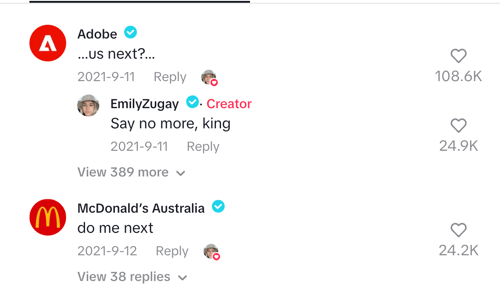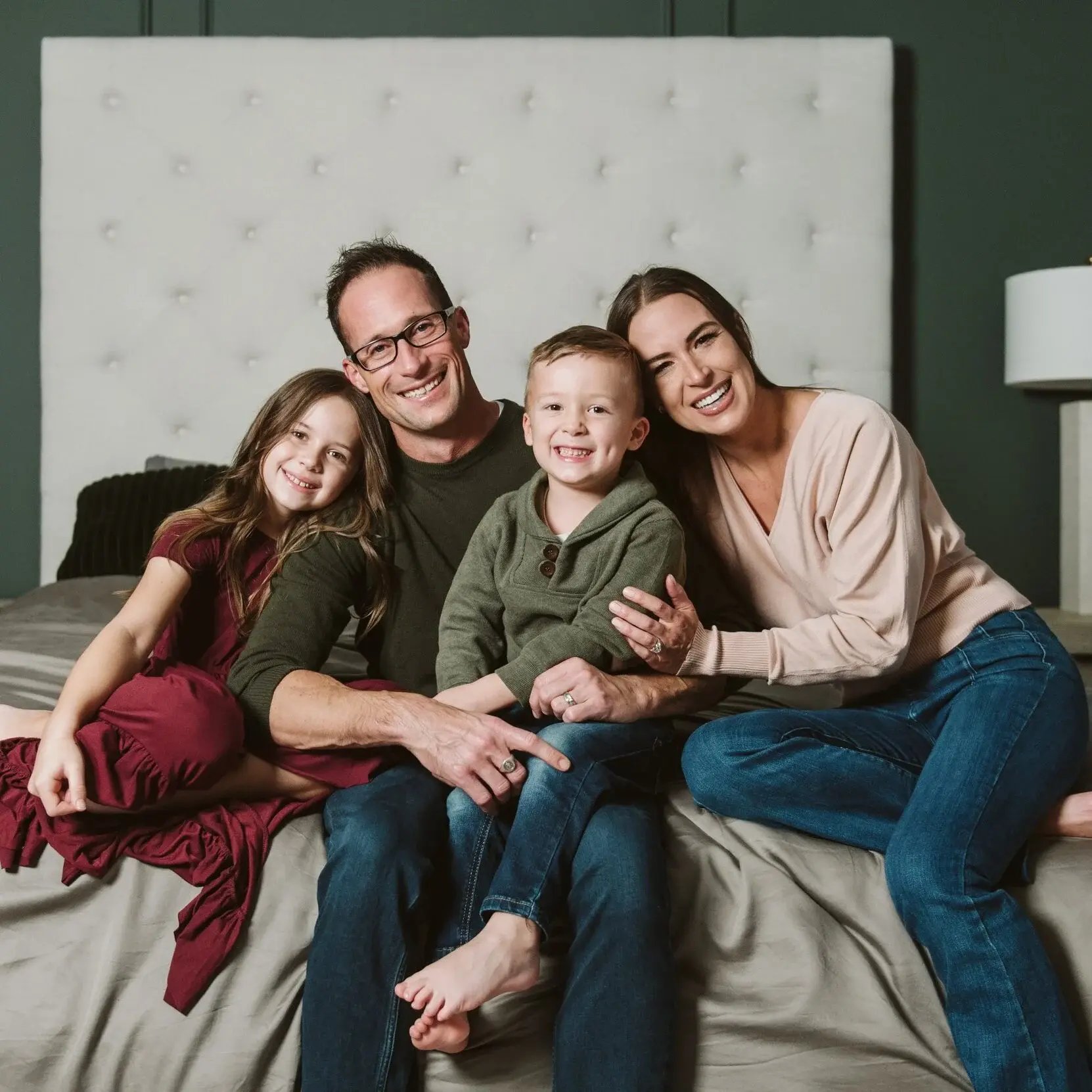You’ve seen the TikToks. A girl in a hoodie starts telling a story about her ex, then it spirals into childhood trauma, ghosting, and some random confession about an unpaid electricity bill.
You think: What the F did I just watch? But you're probably hooked and watch the whole 3-5 minute bit.
For years, influencer marketing followed a familiar formula: polished videos, pre-approved talking points, clean transitions, and calls-to-action you could spot from a mile away. But something shifted. Suddenly, the content that grabs millions of views today isn’t sleek—it’s messy and honestly a bit chaotic.
Welcome to the rise of unhinged storytelling. It’s raw, real, and resonates with a lot of people.
For marketers paying attention, it’s how to sell in a culture that’s grown immune and tired of being sold to. This is the new creator economy.
The New Rules of Influence
Research shows that 71% of consumers trust influencer content. And it’s not hard to understand why when they’re served up videos like this:
It’s relatable, it’s fun, and apparently when people have tea, your future spenders are sat. That’s the new influence formula: chaos with commercial potential.
To sum it up, unhinged storytelling works because it triggers:
- Curiosity: You never know where the story’s going next.
- Emotional intimacy: It feels like being let in on a secret.
- Parasocial trust: Oversharing builds a connection faster than polish ever could.
It’s not chaos for chaos’ sake. Unhinged storytelling is a form of strategic vulnerability, which is why it’s rewriting influencer marketing playbooks.
Why You Shouldn’t Fear the Chaos
For a lot of brands, this format feels uncomfortable. It’s off-script. Unpolished. Unbranded.
But that’s exactly why it works.
In the old model, “brand consistency” meant clean visuals, perfect lighting, and airtight messaging. That kind of control used to signal credibility. Today, it signals sales.
Modern consumers can spot a polished ad from a mile away. Their guard goes up instantly. The moment something feels like a campaign, they scroll.
They don’t want to be sold to; they want to see themselves.
They crave emotional resonance. They want a creator who reminds them of their own group chat — someone messy, funny, relatable, and real.
And because of that, the unbranded feel is the branding.
When a creator sits on their floor in a hoodie, venting about life and casually mentioning your product in passing, it communicates: “This brand fits into real life.”
When your brand becomes a believable part of the conversation — not the conversation itself — that’s when attention turns into trust, and trust turns into conversion.
4 Types of “Unhinged” Storytelling (and How to Use Them)
There’s one thing you need to know about unhinged storytelling… The mess is what makes it real.
Here are some of the most common formats you can try:
1. The Confession Spiral
Tl;dr on this formula: Starts normal, goes off the rails, ends somewhere human. Start your video with a normal story, then pivot to an unrelated confession. Let your product cameo mid-chaos, not at the end.
Creators like Madeline Argy have perfected the art of chaotic storytelling. In one of her most viral TikToks, Madeline shares an offbeat secret involving period pads — an overshare that racked up half a million likes.
The ending? Complete silence. She just applies her mascara while viewers process what they heard.
The comments section goes wild. Not just about the confession, but the mascara:

Why this formula works:
- Feels like a one-on-one vent session.
- Viewers reward vulnerability with engagement.
- Brands can integrate naturally (“This is the mascara that survived my emotional spiral.”).
Even though this is one of her older videos, the format clearly works because as of today she’s known for her “unhinged” personality, with over 9.6M followers.
2. The O-Natural Conversation
Tl;dr on this formula: Capture a chaotic but authentic interaction between people. The story plays out like a real-life moment — a couple arguing, roommates joking, or friends oversharing. The product becomes the punchline or the unexpected solution.
Happy Nuts nails this format. A partner jokes about an unpleasant smell, sparking a hilarious back-and-forth, and ends with an organic product mention.
Anthony Lazarus, Co-Founder & COO of Happy Nuts and Happy Curves, summed up the power of letting creators stay chaotic:
“We’ve leaned heavily into what you’re calling the ‘unhinged’ storytelling format — creators talking like they’re FaceTiming a friend, telling wild stories with the brand woven in. Affiliates will never stick to a script anyway; they’ll use their own slang and humor. And that’s the point. The authenticity makes it click.”
Over the past few months, this unhinged format alone has driven 70M+ views for Happy Nuts.
“One creator’s funny phrasing about ‘ball cheese’ even sparked a viral domino effect with hundreds of affiliates riffing on it. You can’t manufacture that,” Anthony said.
Why this formula works:
- Mirrors how real people talk about awkward topics.
- Humor builds trust and relatability.
- Sparks organic trends other creators want to join.
If the conversation feels too polished, it’s wrong.
3. FaceTime-Style Content
Tl;dr on this formula: Feels like a post-breakdown FaceTime call. The creator reflects on something emotional, finds a lesson, or shares an interesting story or piece of gossip. Throughout the video, they casually slip in products that’s part of their routine.
Think of a creator unpacking a bad breakup, crying, and saying mid-rant, “I’ve been using this vitamin C serum lately — it’s helping me at least look like I have it together.”
The plug lands because it’s emotionally timed, and the message is focused on the person’s emotions, not the product features.
Here’s a great example, where products are casually mentioned in the caption and shown throughout the story:
Here’s another example from Madeline Argy, where she talks about how much her acne is bothering her. She doesn’t even mention the brand Cerave, but the video is in paid partnership with them and is highlighted above the video description:
Why this formula works:
- Humanizes the creator and brand through shared vulnerability.
- Makes the product part of the emotional journey, not an ad.
- Audiences stick around because it feels real, not rehearsed.
The key is restraint. Don’t jump to the CTA. Let the audience feel the moment before connecting it back to your product.
4. The Chaos Chain Reaction
Tl;dr on this formula: One story sparks hundreds. A single unhinged narrative becomes a trend that creators remix, duet, or stitch — often without the brand even asking.
One of the most viral TikTok trends of last year, “Who the F Did I Marry?”, is the perfect example of how pure, unhinged storytelling like this has the ability to cause a chain reaction.
It was one person’s story that turned into a cultural event. Over 50+ parts to the story. Millions of views. Thousands of duets. Comments like, “This is better than Netflix.”
Brands didn’t create these stories, but there is opportunity to exist inside them. Products appeared in the background, in captions, or mid-rant, turning viral chaos into a subtle ad.
And even if you’re product isn’t shown in the ad itself, brands are now commenting on these viral videos to spark interest. For example, Emily Zugay once had a series go viral where she was re-designing popular logos for brands. She was making them purposely bad and giving off a persona that her designs were much better than the originals:
This series became so popular, dozens of large brands started commenting and engaging. Many even giving her permission to use their logo in the next video:

This is one way brands can insert themselves into these chaotic videos, even if they’re not directly mentioned by the creator.
Why this formula works:
- Leverages the internet’s instinct to remix and respond.
- Scales engagement without ad spend.
- Keeps brand presence authentic because creators choose to include it.
The Psychological Triggers Behind Unhinged Storytelling
At first glance, unhinged storytelling might look like randomness. But underneath the chaos is a strategic opportunity to push products, backed by behavioral science.
Here’s the psychology that makes it work:
Mere-Exposure + Confirmation Bias
We’re wired to trust what feels familiar and true. That’s the mere-exposure effect — the more we see something, the more we like it.
When creators post regularly, showing their real personalities (the crying, the oversharing, the chaos), we start to trust them like friends. Add confirmation bias (the idea that people seek out information that confirms their existing beliefs or opinions), and we’re drawn to content that validates our worldview.
That’s why a creator can say, “I texted my ex at 2 a.m. and cried through this mascara”, and people respond with “same”. The product isn’t the focus, the emotion is.
In-Group Bias + Choice-Supportive Bias
People don’t buy based on who they are — they buy based on who they want to be seen as.
Unhinged creators tap the same trigger. Their stories create micro-identities: “the chaotic friend,” “the relatable overthinker,” “the one who overshares but has a heart of gold.”
That’s in-group bias in action: people trust and imitate creators who reflect their own emotional language and lifestyle.
Once they buy, choice-supportive bias keeps them loyal. This bias is how they justify their purchase by romanticizing it later (“this mascara never fails me”).
Salience + Bandwagon Effects
In an oversaturated feed, chaos wins the scroll war. That’s salience. Our brains pay attention to what breaks a pattern.
Unhinged videos are unpredictable, unscripted, and therefore cognitively irresistible.
Add bandwagon effect, and once a creator’s story goes viral, everyone wants in — both viewers and other creators. That’s exactly how Happy Nuts’ “ball cheese” moment spread into 70M+ views.
Zero-Risk Comfort Zone
Even in chaos, people crave certainty. That’s zero-risk bias — we prefer a safe choice.
When creators show a product as part of their daily ritual, especially in messy, real-life contexts, it signals safety through familiarity.
It’s the marketing equivalent of saying, “You don’t have to change your life. Just add this one small thing to improve it.”
Nothing Resonates More Right Now Than Raw, Chaotic Honesty
The best-performing influencer content today doesn’t feel like marketing.
So here’s the takeaway: Don’t fight the FaceTime format. Embrace it. Build for it. And sell through it.
.png)


.png?width=300&height=300&name=Minimal%20Photocentric%20Productivity%20Blog%20Banner%20(3).png)
